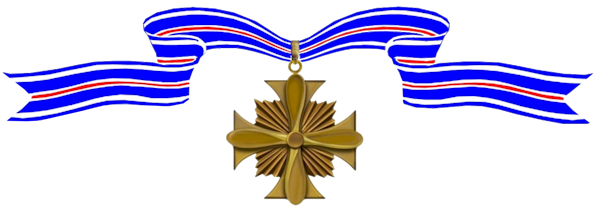A veteran of service as a P-47 pilot in World War II, Charles Loring was shot down on December 24, 1944, and held as a Prisoner of War of by Germans until May 5, 1945. He was subsequently shot down and listed as missing in action in the Korean War.

–
Cemetery:
Awards Received
-

Medal of Honor
-

Prisoner of War Medal
-
Medal of Honor
Service:
United States Air ForceRank:
MajorBatallion:
80th Fighter-Bomber SquadronRegiment:
8th Fighter-Bomber GroupDivision:
5th Air ForceAction Date:
November 22, 1952
The President of the United States of America, in the name of Congress, takes pride in presenting the Medal of Honor (Posthumously) to Major Charles Joseph Loring, Jr. (AFSN: 13008A), United States Air Force, for conspicuous gallantry and intrepidity at the risk of his life above and beyond the call of duty while serving as Pilot of an F-80 Shooting Star Fighter-Bomber of the 80th Fighter-Bomber Squadron, 8th Fighter-Bomber Group, FIFTH Air Force in aerial combat at Sniper Ridge, North Korea, on 22 November 1952. While leading a flight of four F-80 type aircraft on a close support mission, Major Loring was briefed by a controller to dive-bomb enemy gun positions which were harassing friendly ground troops. After verifying the location of the target, Major Loring rolled into his dive bomb run. Throughout the run, extremely accurate ground fire was directed on his aircraft. Disregarding the accuracy and intensity of the ground fire, Major Loring aggressively continued to press the attack until his aircraft was hit. At approximately 4,000 feet, he deliberately altered his course and aimed his diving aircraft at active gun emplacements concentrated on a ridge northwest of the briefed target, turned his aircraft 45 degrees to the left, pulled up in a deliberate, controlled maneuver, and elected to sacrifice his life by diving his aircraft directly into the midst of the enemy emplacements. His selfless and heroic action completely destroyed the enemy gun emplacement and eliminated a dangerous threat to United Nations ground forces. Major Loring’s noble spirit, superlative courage, and conspicuous self-sacrifice in inflicting maximum damage on the enemy exemplified valor of the highest degree and his actions were in keeping with the finest traditions of the U.S. Air Force.
-
Prisoner of War Medal
Service:
United States Army Air ForcesRank:
First Lieutenant (Air Corps)Division:
Prisoner of War (Germany)Action Date:
December 24, 1944 – May 5, 1945
NARA Database: Records of World War II Prisoners of War, created, 1942 – 17243First Lieutenant (Air Corps) Charles Joseph Loring, Jr. (AFSN: 13008A/AO-48482), United States Army Air Forces, was captured by German forces after he was shot down on 24 December 1944, and was held as a Prisoner of War until his return to U.S. Military Control at the end of hostilities on 5 May 1945.


